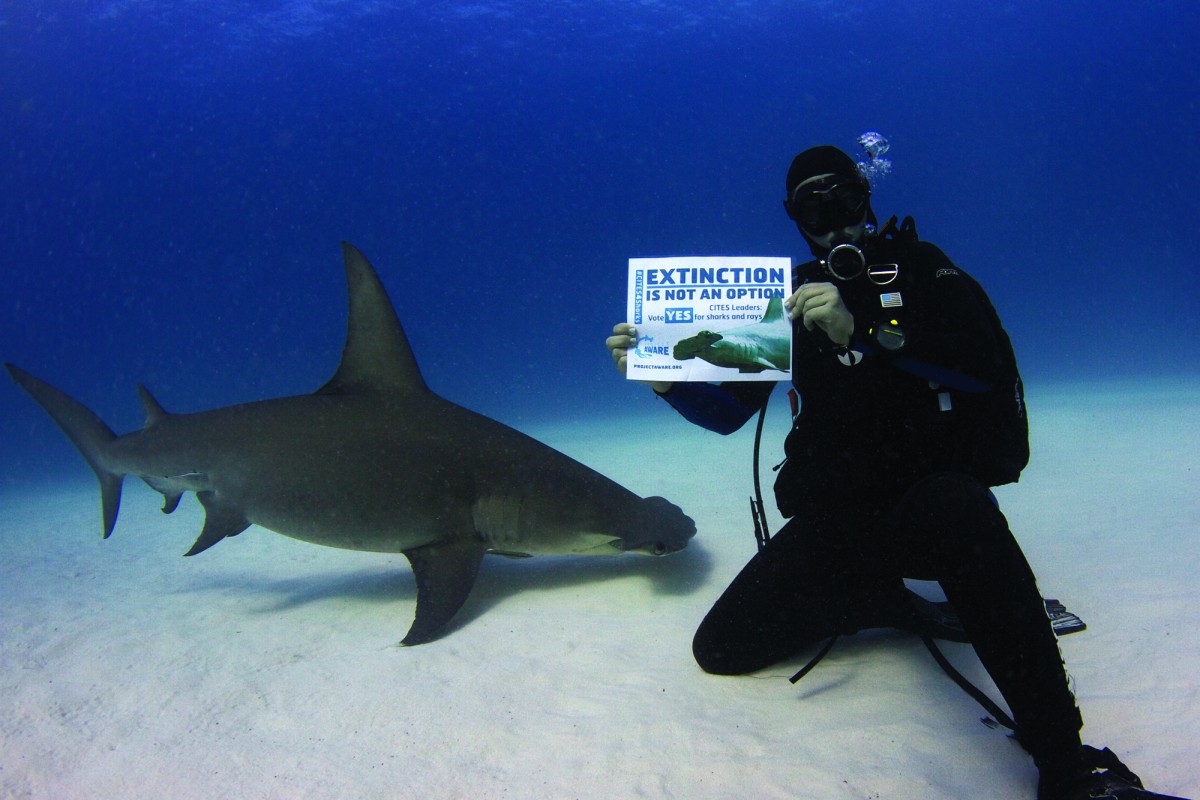Historic Shark and Ray Protections Take Effect

It’s hard to believe that 18 months has passed since historic decisions were made for sharks and rays. Together with you and our partners, we had campaigned for this moment. On 15th March 2013, we were thrilled and relieved when an unprecedented number of commercially valuable shark and ray species won protections from international trade under CITES (Convention on International Trade in Endangered Species of Wild Fauna and Flora) – the largest, most effective wildlife conservation agreement in existence.
We’re now celebrating these victories all over again, as 14th September is the day that these international trade protections officially go into effect. Today we also celebrate you - the ocean advocate! We’re grateful for your involvement and the support that helped bring about last year’s decision to list oceanic whitetip sharks, porbeagles, three species of hammerheads, and two species of manta rays under CITES Appendix II, not to mention the uplisting of “freshwater sawfish” to Appendix I. We couldn’t have done it without you!
Since that fateful day in March last year, CITES member countries have been busy preparing to meet today’s deadline for implementing the new shark and manta listings, by assessing population health and establishing new permit systems to prevent unsustainable trade in these species. With 180 member countries, CITES provides an international framework for monitoring and controlling international trade in species at risk. The 2013 CITES decision for sawfish is already in effect and serves to complete a global ban on commercial, international trade in these exceptionally endangered shark-like rays.
Since 2013, an unprecedented effort has been made to ensure the new shark and ray measures work as intended to safeguard these vulnerable and valuable species. Of course, CITES measures work best when all member countries comply – some are currently opting out of one or more of the new CITES shark and rays listings by exercising their right to take out “reservations”. There are ongoing efforts to get these countries to change course and end their reservations.
Why are international trade restrictions important for the newly listed species?
- Asian demand for the exceptionally valuable fins of hammerhead sharks (for shark fin soup) is a leading threat to this highly threatened group of sharks.
- International agreements to prohibit fishermen from keeping oceanic whitetip sharks taken in high seas tuna fisheries can be bolstered by restrictions on this species’ highly recognizable fins;
- Restrictions on trade in both fins and the highly valuable meat of porbeagle sharks can bolster EU protections for this species, while promoting similar responsible actions in other Atlantic countries and for the high seas
- Tracking and curbing the international trade in manta ray gill plates (for Chinese medicine) is an essential first step in preventing further depletion for these and related species of devil rays, thereby preserving opportunities for manta-based ecotourism.
- Ending trade in sawfish fins and snouts is an important part of a global effort to prevent the extinction of these remarkable yet gravely threatened rays.
We couldn’t be more proud of our work together to secure these critical milestones. Thank you for rallying behind this campaign and using your voice and your influence to protect some of the world’s most threatened sharks and rays!
Photo By: Joe Romeiro with special thanks to Curt-a-Sea Aquatic Adventures and the RJ Dunlap Marine Conservation Program



